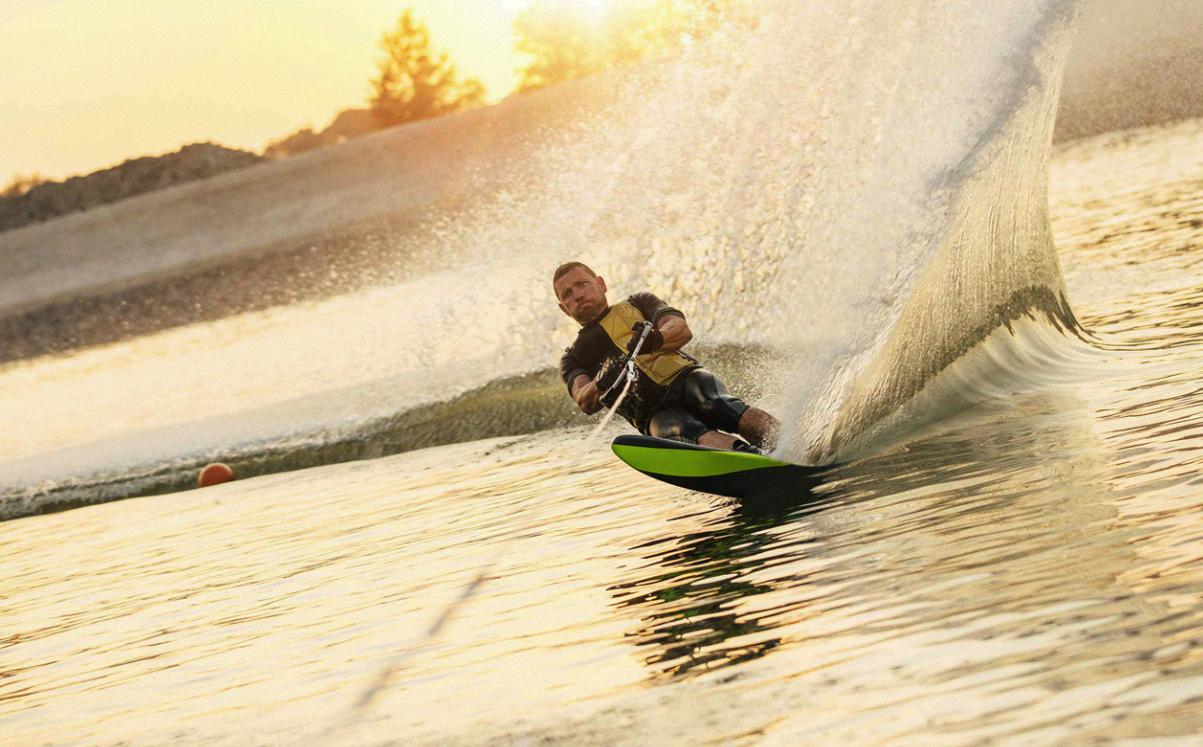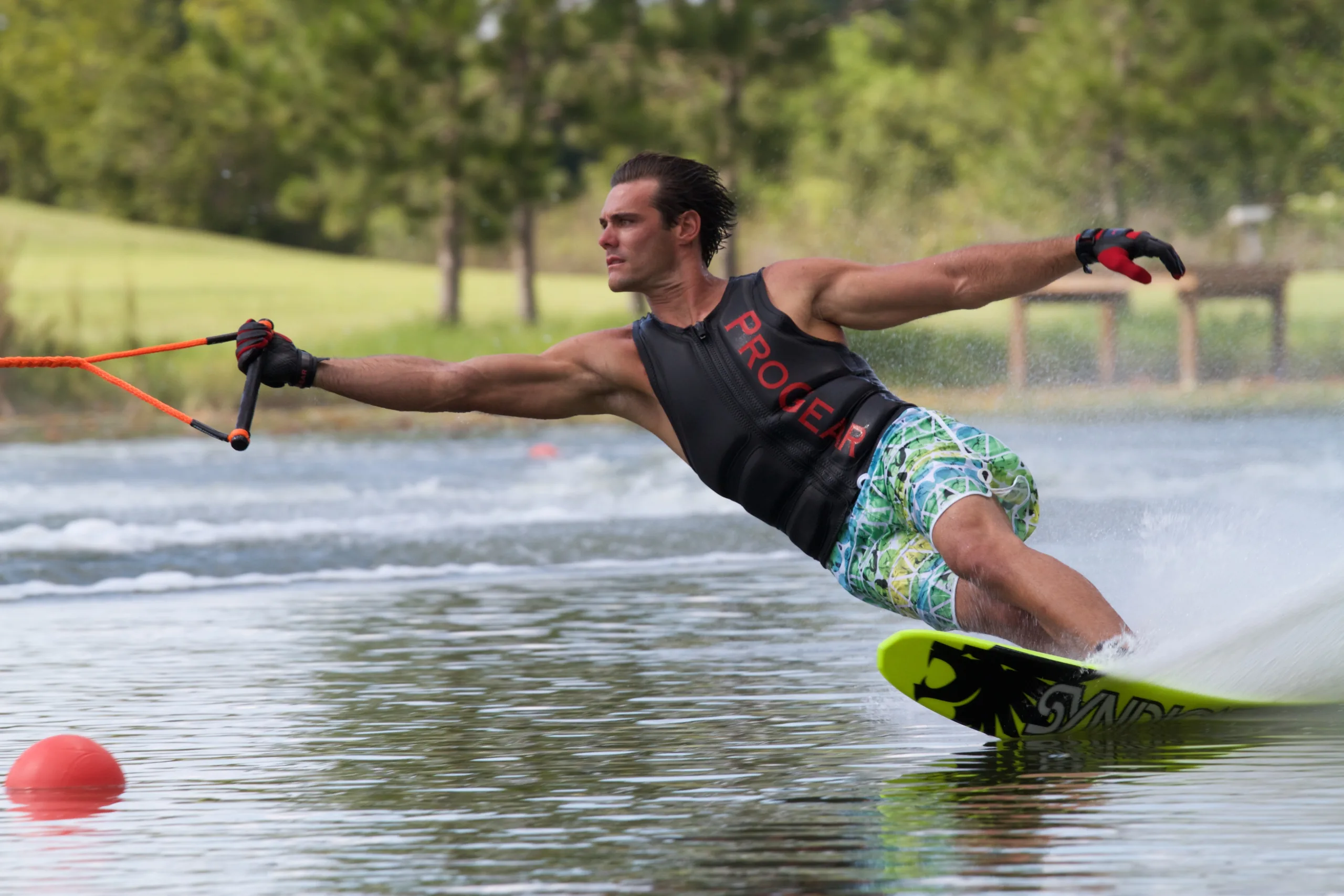Water skiing is an exhilarating water sport that can provide hours of fun and excitement. However, like any activity, it is important to prioritize safety to ensure a positive and enjoyable experience. By following proper water skiing safety practices, you can minimize the risk of accidents and injuries. One highly recommended safety practice is to let a designated person, preferably an experienced individual, direct the actions of the boat.
When water skiing, it is crucial to maintain clear communication and coordination with the boat operator. This person should have a clear view of the skier at all times and be responsible for controlling the speed and direction of the boat. By designating a responsible individual to manage the boat, the skier can focus solely on their performance and enjoy the ride without any distractions.
Another important safety practice is to hold up a water ski when a skier falls. This action serves two purposes. Firstly, it makes it easier for the tow boat to spot the skier in the water, ensuring their safety. Secondly, it acts as a signal to other boats in the vicinity that there is a skier in the water, reducing the risk of collisions.
Water skiing should never be attempted after dark. Limited visibility during nighttime can significantly increase the chances of accidents occurring. It is best to stick to daylight hours when the skier and boat operator have a clear view of their surroundings.
To prevent propeller injuries, it is essential to shut off the engine before allowing the skier to board the boat. This practice ensures that the skier can safely climb onto the boat without any risk of coming into contact with the still-running propeller. Once the skier is safely on board, it is also recommended to retrieve the tow line unless there is another skier being pulled.
Clear and effective communication between the skier and the boat operator is crucial for a safe water skiing experience. To achieve this, a set of hand signals are commonly used. A flat hand held out signifies a stop, while a circle made with the thumb and pointer finger (OK signal) indicates that the speed is acceptable. A flat hand pointed to the left or right signals a turn in the respective direction.
Water skiing encompasses various disciplines such as speed skiing, trick skiing, show skiing, slaloming, jumping, barefoot skiing, and wakeski. Each of these disciplines has its own set of safety practices and considerations that participants should be aware of. It is essential to familiarize oneself with the specific safety guidelines for the chosen discipline and adhere to them strictly.
It is worth mentioning that water skiing has similarities with other water sports such as wakeboarding, kneeboarding, discing, tubing, and sit-down hydrofoil. While each sport may have its unique characteristics, the importance of safety remains constant. Proper safety practices should be followed regardless of the chosen water sport.
Water skiing can be a thrilling and enjoyable activity, but it is crucial to prioritize safety. By designating a responsible person to direct the actions of the boat, holding up a water ski when a skier falls, avoiding night skiing, shutting off the engine before boarding, and using proper hand signals, you can significantly reduce the risk of accidents and injuries. Remember to always prioritize safety and enjoy the exhilarating experience of water skiing responsibly.
What Should A Skier Do If She Falls In The Water?
When a skier falls in the water, there are a few important steps to follow:
1. Hold up a water ski: It is crucial to hold up one of your water skis above the water level. This serves two purposes. Firstly, it makes it easier for the tow boat to spot you as they can easily see the ski above the water. Secondly, it acts as a signal to other boats in the area that you are in the water, ensuring they are aware of your presence.
2. Direct the actions of the boat: While in the water, communicate with the boat driver and instruct them on what actions to take. This can include slowing down, circling back to pick you up, or adjusting the boat’s direction, depending on the situation and your preferences.
3. Stay visible: It is essential to remain visible to other boaters. Apart from holding up a ski, consider wearing brightly colored clothing or using a safety flag to increase your visibility in the water.
4. Do not water ski after dark: It is strongly advised to avoid water skiing after dark. Reduced visibility during nighttime can lead to accidents and make it difficult for other boaters to spot you in the water. Stick to skiing during daylight hours to ensure your safety.
By following these guidelines, you can ensure your safety and alert others of your presence in the water when you fall while water skiing.

What Is The Best Way For A Skier In The Water To Avoid A Propeller Injury?
To ensure the safety of a skier in the water and prevent propeller injuries, it is crucial to follow a few important guidelines. Here are the steps to take:
1. Shut off the engine: Always turn off the boat engine before allowing the skier to board the boat. This will eliminate any potential danger posed by the propeller.
2. Wait for the skier to be on board: Once the skier has successfully boarded the boat, ensure they are in a safe and secure position before proceeding.
3. Retrieve the tow line: After the skier is safely on board, promptly retrieve the tow line from the water. This will prevent any entanglement or risk of the line getting caught in the propeller.
4. Exercise caution when pulling another skier: If you are planning to pull another skier after the first one is on board, take extra care. Ensure that the tow line is properly secured and that all individuals in the water are at a safe distance from the boat’s propeller.
By following these steps, skiers can actively minimize the risk of propeller injuries while enjoying their time on the water.
What Are The Water Skiing Signals?
Water skiing signals are visual signals used to communicate and coordinate actions between the skier and the boat driver. These signals are essential for ensuring the safety and enjoyment of all participants involved in water skiing activities. Here are the commonly used water skiing signals:
1. Flat hand out: This signal indicates the skier should stop. When the boat driver raises their flat hand up and extends it outwards, the skier should release the towline and come to a stop.
2. Circle with pointer finger and thumb (ok signal): This signal indicates that the skier’s speed is fine. When the boat driver forms a circle with their thumb and pointer finger and holds it up, it means the skier should maintain their current speed.
3. Flat hand pointed left: This signal instructs the skier to turn left. The boat driver extends their flat hand to the left, indicating that the skier should initiate a left turn.
4. Flat hand pointed right: This signal instructs the skier to turn right. The boat driver extends their flat hand to the right, indicating that the skier should initiate a right turn.
It is important for both the skier and the boat driver to be familiar with these signals and to communicate effectively through them. Clear and concise communication using these signals helps ensure a smooth and safe water skiing experience.
What Are The Different Types Of Water Skiing?
Water skiing is a thrilling water sport that offers various types of activities for enthusiasts to enjoy. Here are the different types of water skiing:
1. Speed skiing: As the name implies, speed skiing involves skiing at high speeds. The goal is to achieve the fastest time possible on a straight, marked course.
2. Trick skiing: Trick skiing focuses on performing acrobatic tricks and maneuvers while skiing. Skiers showcase their skills by performing flips, spins, twists, and other impressive stunts.
3. Show skiing: Show skiing involves performing entertaining routines and tricks as part of a choreographed show. Skiers perform synchronized moves, jumps, pyramids, and other visually appealing stunts to entertain spectators.
4. Slaloming: Slalom skiing is a popular form of water skiing that involves navigating a series of buoys in a zigzag pattern. Skiers must maneuver around the buoys while skiing at high speeds, showcasing their agility and precision.
5. Jumping: Jump skiing involves launching off a ramp and attempting to achieve the longest jump possible. Skiers build up speed and launch themselves into the air, aiming to land smoothly and cover the greatest distance.
6. Barefoot skiing: As the name suggests, barefoot skiing involves skiing without the use of skis. Skiers rely solely on their feet, using their balance and strength to skim across the water’s surface.
7. Wakeski: Wakeskiing combines elements of water skiing and wakeboarding. Skiers use a single ski, similar to traditional water skiing, but with a smaller surface area. This allows for more maneuverability and the ability to perform tricks typically associated with wakeboarding.
Other related water sports that share similarities with water skiing include wakeboarding, kneeboarding, discing, tubing, and sit-down hydrofoil. Each of these sports offers its own unique experience and challenges for water sports enthusiasts.
Water skiing encompasses a wide range of activities, including speed skiing, trick skiing, show skiing, slaloming, jumping, barefoot skiing, and wakeski. These various types of water skiing offer something for everyone, from those who enjoy high-speed thrills to those who prefer performing acrobatic tricks or entertaining audiences with synchronized routines.

Conclusion
Practicing water skiing safety is of utmost importance to ensure a fun and accident-free experience on the water. By following the guidelines and tips mentioned above, you can greatly reduce the risk of injuries and accidents while enjoying this exhilarating sport.
Always wear a properly-fitted life jacket, maintain a safe distance from other boats and objects in the water, and communicate effectively with the boat driver using hand signals. Remember to hold up a water ski when a skier falls to make yourself visible to other boats and retrieve the tow line after the skier is safely on board.
Additionally, it is crucial to avoid water skiing after dark and always shut off the engine before allowing the skier to board the boat to prevent propeller injuries. Being aware of your surroundings and practicing good communication and safety measures will ensure a safe and enjoyable water skiing experience.
Water skiing offers a variety of disciplines, from speed skiing to trick skiing, slaloming, and jumping. Each discipline requires its own set of skills and safety precautions. By familiarizing yourself with the specific rules and techniques of the discipline you wish to pursue, you can further enhance your safety and performance on the water.
Remember, water skiing is a thrilling and enjoyable sport, but it is essential to prioritize safety at all times. By following these guidelines and practicing responsible water skiing habits, you can have a fun and memorable experience without compromising your well-being. So, get out on the water, have fun, and stay safe!
